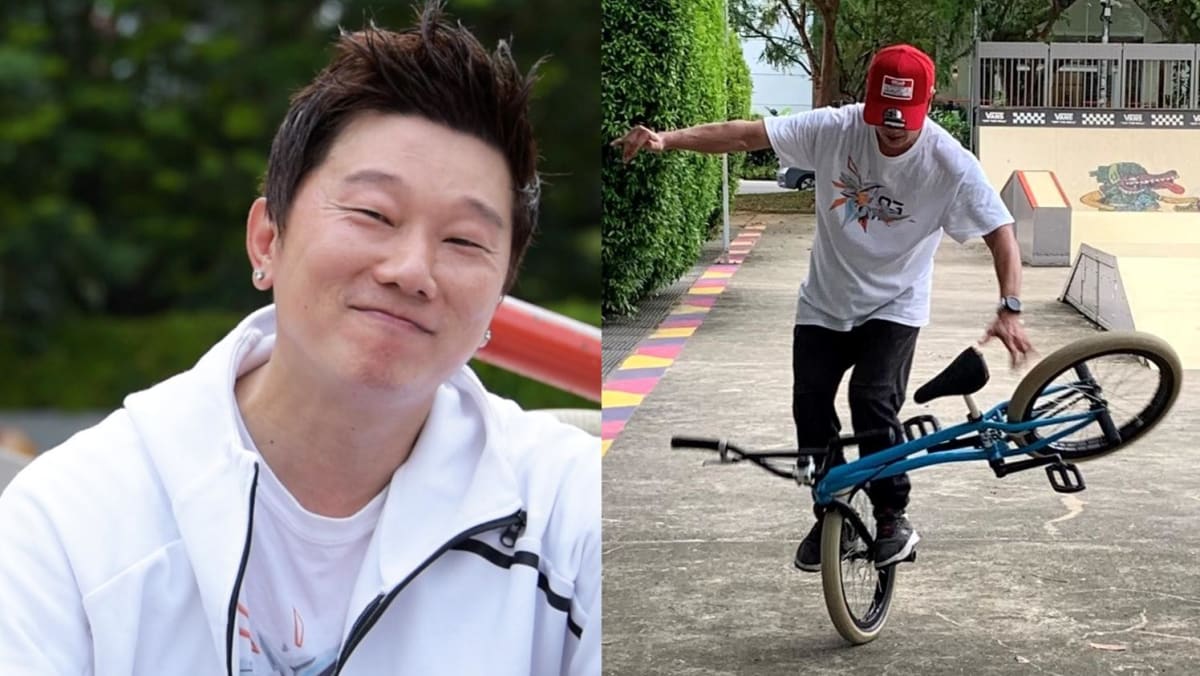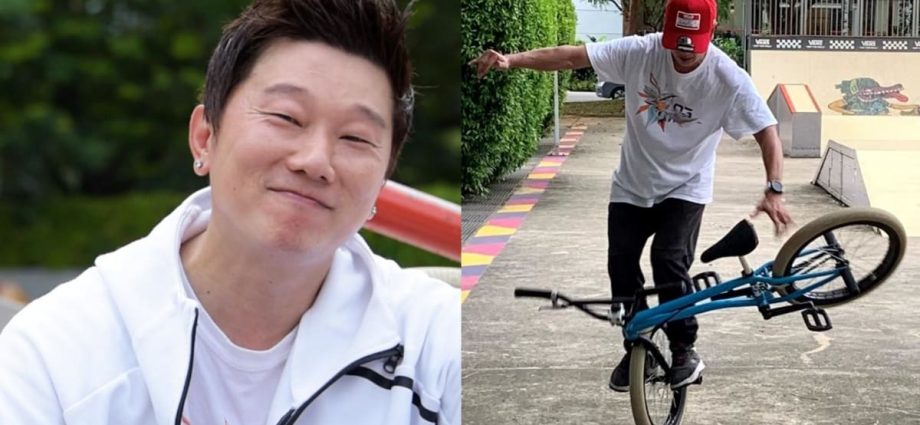
It doesn’t have brakes (mostly): Sans brakes, the BMX bike is easier to maintain, lighter and most importantly, there are no brake cables that can catch your clothes, explained Tay. In fact, most of the flatlanders in the world ride brakeless now, he said.
However, Singapore’s law doesn’t allow brakeless bike riding and as such, Tay has installed the Gyro, a rear brake system that allows for 360-degree rotation, on the bikes he uses for tricks. (He has three flatland BMXes, a street BMX, a foldable bike and a mini bike.)
It has a smaller sprocket: Instead of the 25-tooth sprockets that other BMX bikes use, the flatland bike uses a smaller, 20-tooth sprocket, so that it doesn’t catch the foot.
There are plastic pegs: In place of smooth, metal pegs (cylinders that attach to the front or rear axle) that other BMX bikes have for the rider to grind on rails, flatlanders use plastic ones with grippy surfaces to help them with their tricks.
The tyres require higher pressure: We’re talking about 90psi to 100psi, compared to the 55psi to 75psi range for street BMX bikes.

